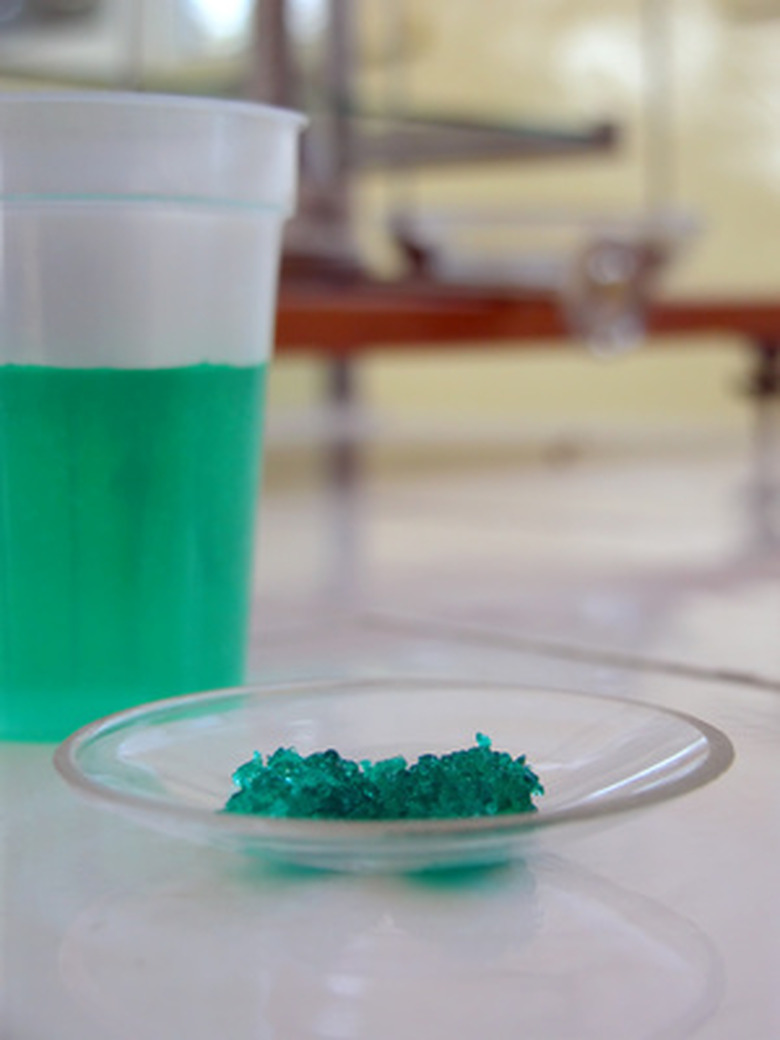How To Calculate Concentration From Density
Density and concentration both describe the amount of a solute per unit volume of a solvent. The former value measures mass per volume. The latter value measures how many moles of atoms exist per unit volume. The solute's mass tells you how many moles it contains. You can calculate the solution's mass as long as you know the solute and solvent's mass. The solution's density then lets you calculate its volume.
Step 1
Divide the solute's mass by its molar mass. If, for instance, the solution contains 30 grams of silver nitrate, which has a molar mass of 169.88: 30 / 169.88 = 0.176 moles.
Step 2
Add the mass of the solute to the mass of the solvent. If the silver nitrate is dissolved in 70 grams of water: 30 + 70 = 100 grams.
Step 3
Divide this answer by the solution's density. If its density is 1.622 grams per cubic centimeter: 100 / 1.622 = 61.65. This answer is the solution's volume, measured in cubic centimeters.
Step 4
Divide your answer by 1,000 to convert it to liters: 61.65 / 1,000 = 0.06165.
Step 5
Divide the answer to Step 1 by the answer to Step 4: 0.176 / 0.06165 = 2.85 moles per liter.
Cite This Article
MLA
Menezes, Ryan. "How To Calculate Concentration From Density" sciencing.com, https://www.sciencing.com/how-7821064-calculate-concentration-density/. 7 August 2017.
APA
Menezes, Ryan. (2017, August 7). How To Calculate Concentration From Density. sciencing.com. Retrieved from https://www.sciencing.com/how-7821064-calculate-concentration-density/
Chicago
Menezes, Ryan. How To Calculate Concentration From Density last modified March 24, 2022. https://www.sciencing.com/how-7821064-calculate-concentration-density/
